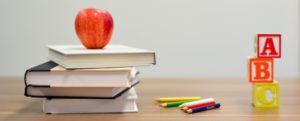Education should be a positive transformative force in the world, where teachers and students bring out the best in one another and contribute to their communities. The best school enables young scholars to think critically and gives them the tools to lead rich, meaningful lives. Effective schools involve parents, teachers, and administrators in the holistic process of teaching character standards in a safe environment. These centers of learning also encourage teachers to personalize their instruction by creating a nurturing environment and teaching to the child. The steadfast dedication of the faculty and administration in the ideal school sets the stage for positive involvement in the community, which will enrich the school in a variety of areas.
 The best Spanish and ESL classrooms are places where teachers and students engage in exciting and meaningful interactions that impact students long after the classes end. These classrooms are places where students feel safe, embrace healthy risk-taking and begin to think critically in the target language. As students progress to the upper grades, effective language teachers guide students from project-based to individual learning, as well as the development of public speaking skills. These are classes where standards are high, expectations are clear, and where teachers challenge students to give their very best.
The best Spanish and ESL classrooms are places where teachers and students engage in exciting and meaningful interactions that impact students long after the classes end. These classrooms are places where students feel safe, embrace healthy risk-taking and begin to think critically in the target language. As students progress to the upper grades, effective language teachers guide students from project-based to individual learning, as well as the development of public speaking skills. These are classes where standards are high, expectations are clear, and where teachers challenge students to give their very best.
The strength of the ideal school lies in its ability to develop Spanish or ESL programs that grow according to student need and are based on the goals of proficiency and fluency. Students learn best when they feel cared for and are provided with the right tools to put in their toolbox of techniques for success. It is also crucial that classrooms be a place for students to learn values such as tolerance, empathy and perseverance. These are classes where 7th graders excitedly describe the challenges and victories of painter Frida Kahlo and where 11th and 12th graders describe their hopes and dreams for a better world.
To meet the objectives of building fluency in a second language, the effective language teacher employs methods that combine group and individual work. Before every unit, setting learning goals encourages students to understand what it is they must know. After the introduction of grammar or vocabulary by movie clip, picture, or total physical response, students engage in discussion with a partner or in a group, to describe what they see or hear using their newly acquired language. Older students would also engage in role-playing, detailed discussions, as well as the playing of games such as Pictionary and bingo. Combining these different methods and tools cultivate an atmosphere of learning that is fun and engaging for students of all learning styles. Language students also benefit from learning vocabulary by way of total physical response, and employing those methods to create and read stories in the target language. At all levels, an enrichment and rewards system promotes an atmosphere of mutual respect and discipline.

To measure effectiveness and student growth, the language teacher must conduct frequent formal and informal assessments that test student knowledge in the areas of reading, writing, speaking or listening comprehension. These assessments appeal to different learning styles because they involve traditional and non-traditional delivery. At the end of the fifth grade community unit, my students create a three-dimensional neighborhood in their medium of choice. They must then use the vocabulary and structures they learned to describe people and places in a three-minute oral presentation. Students in grades seven, eight or nine, enjoy a fashion show with oral commentary, or choose to create a fashion magazine. Both projects assess knowledge of numbers, clothing vocabulary and verb conjugation in a way that is fun and significant. Having students complete a variety of assessments ensures that instruction has been effective and differentiated. The strength of the ideal school lies in its ability to develop Spanish or ESL programs that grow according to student need and are based on the goals of proficiency and fluency. Students learn best when they feel cared for and are provided with the right tools to put in their toolbox of techniques for success. It is also crucial that classrooms be a place for students to learn values such as tolerance, empathy and perseverance. These are classes where 7th graders excitedly describe the challenges and victories of painter Frida Kahlo and where 11th and 12th graders describe their hopes and dreams for a better world.
The best schools are also places where teachers and administrators form a collective partnership to guide and mentor one other as well as the students, and embrace a spirit of collaboration. They are places where the mission statement manifests itself in meaningful and cohesive ways amongst students, faculty and parents. These schools are communities where the intellectual and emotional development of all defines the collective good. They are places where all are invested in character building because everyone is valued.
Administrators in such schools cultivate an atmosphere of mutual respect, and support faculty and staff in order to develop leadership potential and celebrate individual gifts.
Ideally, all members of the independent school community should aim to embody responsible citizenship by fostering an ethic of service and promoting integrity. Meaningful service provides both students and teachers with the compassion and perspective necessary to address the concerns of the world beyond the institution. In these schools, every child and every adult must feel valued as a member of a dynamic community defined by a clear sense of purpose, challenging expectations and social responsibility.